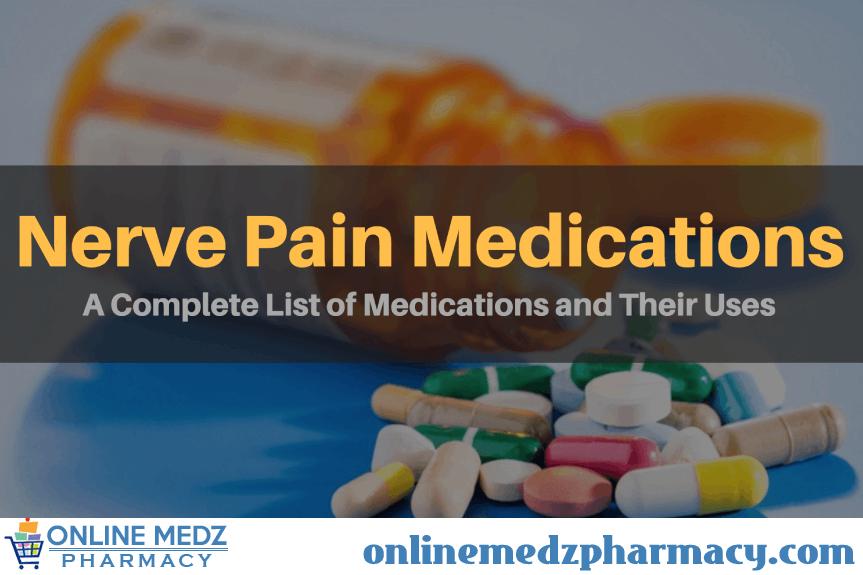Page Contents
Over-the-Counter Pain Medicines
Over-the-Counter (OTC) pain relief medicines include:
- Acetaminophen (Tylenol)
- NSAIDs (Nonsteroidal anti-inflammatory drugs), including naproxen (Naprosyn, Aleve), ibuprofen (Advil, Motrin), or diclofenac gel.
Both NSAIDs and acetaminophen cause pain relief and reduce fever. They can relieve pain caused due to muscle aches and stiffness. However, NSAIDs can also reduce inflammation (irritation or swelling).
Acetaminophen and NSAIDs work differently in the system. Acetaminophen acts on the part of the brain that receives “pain signals.” While NSAIDs relieve pain by decreasing the production of prostaglandins, a hormone-like substance causing pain. NSAIDs are available in recommendable prescription strengths.
NSAIDs also cause some severe undesirable effects such as the increased risk of heart attack or stroke, stomach ulcers and bleeding, and kidney problems.
One more kind of over the counter pain medications is topical pain relievers. These are available without a prescription, including lotions, creams, or sprays applied to the skin for pain relief from arthritis or sore muscles. Some popular, topical pain relievers include Bengay, IcyHot, Aspercreme, and Capzasin-P.
Prescription Pain Medications
Most common prescription pain relievers include:
- Opioids
- Corticosteroids
- Anticonvulsants (anti-seizures medications)
- Antidepressants
- NSAIDs (Nonsteroidal anti-inflammatory drugs)
- Lidocaine patches
What Are Opioids?
Opioid pain medications are narcotics that contain fully synthetic (natural) or semi-synthetic opiates. Opioids help relieve acute to severe pain, such as short-term pain after surgery, chronic pain due to cancer, and others. A few examples of opioids include:
- Codeine
- Methadone
- Tramadol
- Ultram
- Vicodin (hydrocodone-acetaminophen)
- Morphine
- Oxycodone
- Percocet (oxycodone-acetaminophen)
- Roxicodone
Opioids are effective pain relievers that do not cause bleeding in the stomach or other body parts, like some other pain relievers. However, opioids can be highly addictive. Doctors always prefer to choose an alternative medication instead of opiates whenever possible. If used for short periods, their therapeutic effects overcome the side effects. But the risk of severe side effects and addiction is higher if used for long-term treatment of chronic pain.
Some common opioid side effects include:
- Drowsiness
- Constipation
- Nausea
- Vomiting
- Itching
- Breathing problems
- Addiction and abuse
What Are Corticosteroids?
Corticosteroids are prescription medications that provide relief for inflamed areas of the body by easing redness, swelling, itching, and allergic reactions. It can help treat asthma, allergies, and arthritis. Corticosteroids come in the form of pills or injection for targeted areas to control pain. A few examples of corticosteroids are prednisolone, prednisone, and methylprednisolone.
Corticosteroids can have severe side effects, including:
- Weight gain
- Salt retention
- Mood changes
- Peptic ulcer disease
- Sleep disorders
- Thinning of bones
- Weakened immune system
- High sugar levels
Medical professionals prescribe corticosteroids in the lowest effective dosages for the shortest periods to minimize the potential of side effects.
What Are Anticonvulsants?
Anticonvulsants are useful in treating seizure disorders. Some anticonvulsants can also treat pain conditions. It is unclear how these medicines treat pain, but researches show that they might minimize the effects of nerves that cause pain. A few examples of anticonvulsant medications are pregabalin (Lyrica), gabapentin (Neurontin), and carbamazepine (Tegretol).
Generally, people tolerate anticonvulsants. Most common side effects caused due to anticonvulsants include:
- Dizziness
- Drowsiness
- Nausea
- Fatigue
What Are Antidepressants?
Antidepressants are the medications useful in treating pain and emotional conditions by regulating levels of natural chemicals or neurotransmitters in the brain. These medicines increase the signal of well-being and relaxation, which enables pain control for people with chronic pain conditions that do not respond to usual treatments. Several pieces of research show that antidepressants work best at relieving neuropathic or nerve pain.
Low doses of antidepressants (tricyclic) treats chronic pain conditions such as chronic headaches (migraine) and menstrual pain. A few antidepressant medications are:
- Tricyclic antidepressants such as desipramine (Norpramin), amitriptyline, doxepin (Silenor), nortriptyline (Pamelor), and imipramine (Tofranil)
- Selective Serotonin Reuptake Inhibitors (SSRIs) such as sertraline (Zoloft), paroxetine (Paxil), fluoxetine (Prozac), and citalopram (Celexa)
- Serotonin & Norepinephrine Reuptake Inhibitors (SNRIs) such as duloxetine (Cymbalta) and venlafaxine (Effexor)
Antidepressant medications require a quick dose of medicine buildup in the body over some time to work. The doses needed to treat depression are higher than the doses required to treat pain.
Generally, antidepressants have fewer long-term side effects compared to other pain-relieving medications. SNRIs and SSRIs have lesser side effects than tricyclic antidepressants. Some common side effects of antidepressants include:
- Constipation
- Blurred vision
- Dry mouth
- Trouble urinating
- Nausea
- Headache
- Fatigue
Other Pain Medications:
Another tropical pain relief prescription medication is the lidocaine (Lidoderm) patch.
If pain is not treatable by usual treatment options, the doctor may refer a pain management specialist. Doctors specialized in pain management may try alternative treatment options such as physical therapy or some other kinds of medicines. Pain management specialist may also recommend TENS; a procedure involved placing patches on the skin to send pain relief signals.
PCA or pain-controlled analgesia is also a method of pain control that lets a patient control the amount of administration of pain medicine.
Hospitals often use this method to treat pain. The healthcare provider pushes a button on a computerized pump that gives the patient a pre-measured dose of the pain medication. A small tube connects the pump that allows intravenous (into a vein), subcutaneous (just under the skin), or into the spinal area injection of the medicine.

